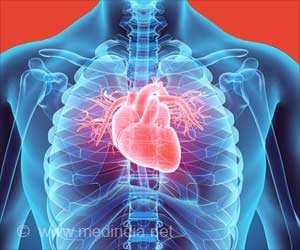Though a thick waist is more than enough to keep you worried about your health, however it's the excess flab around the heart that plays havoc on us, for it can increase the risk for
If you’re worried about the excess flab on your waist, maybe you’ve also got another, more dangerous thing to worry about- pericardial fat. Yes, that’s the excess flab around the heart that plays havoc on us, for it can increase the risk for heart attacks, says a new study.
According to researchers from Wake Forest University Baptist Medical Center and colleagues reporting in the August issue of the journal Obesity, there is a link between fat deposits around the heart, known as pericardial fat, and the development of hard, calcified plaque in the arteries.Calcified plaque itself is not considered risky, but it is associated with the presence of less stable fatty deposits that can lead to heart attack and stroke.
"The distribution of body fat may be as important as the amount of body fat in determining risk of heart attacks," said Jingzhong Ding, M.D., lead author and an assistant professor of gerontology.
"Even a thin person can have fat around the heart," Ding added.
In the study, the researchers examined data from the Multi-ethnic Study of Atherosclerosis (MESA), a 68 million dollars study involving 6,800 participants, to explore their hypothesis that fat around the arteries in the heart contributes to inflammation and to increased risk of fatty deposits in the vessels.
In addition to its role as energy storage, fat is considered to be an "organ" that produces proteins and hormones that affect metabolism and health.
Advertisement
The scientists suspect that constant exposure of inflammatory proteins produced by fat around the heart may accelerate the development of atherosclerosis.
Advertisement
The scientists found that while the volume of pericardial fat was related to levels of calcified coronary plaque, body mass index and waist circumference were not related.
"Our findings suggest that local fat deposits, rather than total body fat, are most related to calcified coronary plaque," said Ding.
"Inflammatory mediators released from pericardial fat may promote inflammation in local coronary arteries and lead to coronary atherosclerosis," Ding added.
Source-ANI
TAN/M












